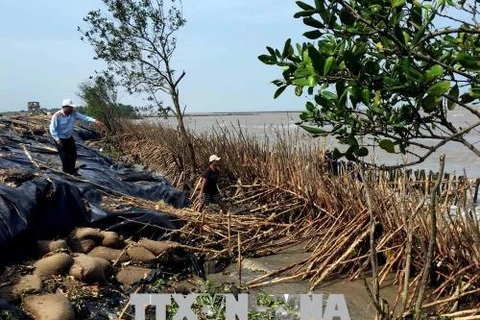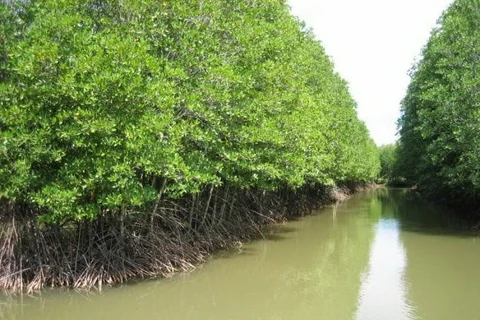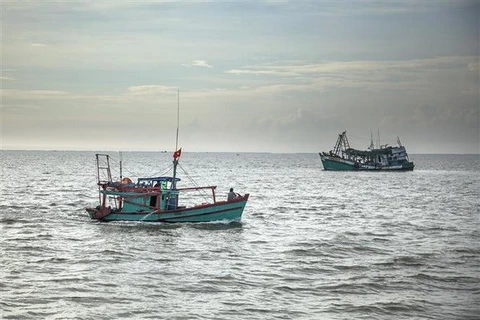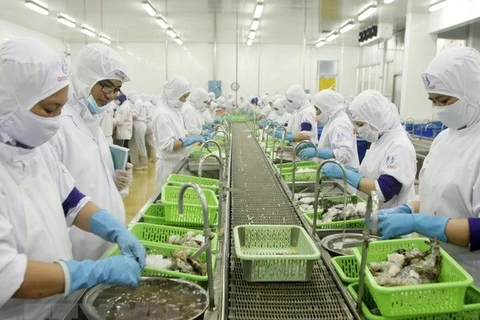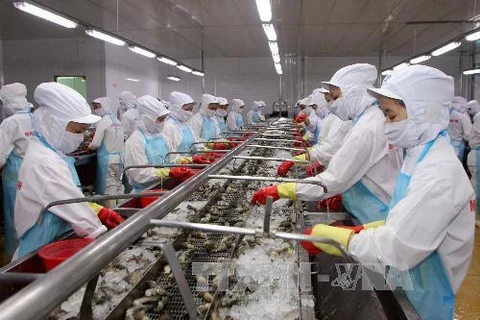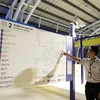Ca Mau (VNA) - Authorities in the southernmost province of Ca Mau are working hard to protect aquatic species in an effort to regenerate them following a long bout of overfishing, and fishermen are strictly following restrictions imposed on them for this.
Many are only catching fish and aquatic species that have reached the stipulated size, Do Chi Si, head of the Fishery Sub-department, said.
The sub-department releases a large number of juveniles of aquatic species into the sea every year.
The province has a coast of more than 254km, accounting for a third of the Mekong Delta’s coastline. It also has 240sq.km of mangrove forests and alluvial grounds which are also habitats for aquatic species.
Therefore, fishing is one of the province’s strengths, but aquatic resources have been dwindling because of over exploitation.
Now the province is also raising awareness among fishermen of the need to protect marine resources.
Si said advocacy activities were regularly organised to educate fishermen in sustainability.
Huynh Van Trai, owner of a fishing boat in Ngoc Hien district’s Tan An commune, said local authorities were focused on regenerating aquatic resources and regularly organise courses to educate fishermen on the issue.
After taking part in the training courses, he and other fishermen only catch fish of a minimum regulated size and use fishing nets that conform to regulations.
Nguyen Thanh Tuan of the Ngoc Hien District Fisheries Extension Station, said Tan An commune in coordination with the district’s marine authorities regularly inspected local fishing activities and found that fishermen fully complied with the new regulations for protecting aquatic resources.
The province is installing black boxes on fishing vessels longer than 15 metres to record their route, speed and other data and provide support for search and rescue in case of accidents or natural disasters.
Around 1,500 of the province’s more than 4,000 fishing vessels need to install the black box.
Many are only catching fish and aquatic species that have reached the stipulated size, Do Chi Si, head of the Fishery Sub-department, said.
The sub-department releases a large number of juveniles of aquatic species into the sea every year.
The province has a coast of more than 254km, accounting for a third of the Mekong Delta’s coastline. It also has 240sq.km of mangrove forests and alluvial grounds which are also habitats for aquatic species.
Therefore, fishing is one of the province’s strengths, but aquatic resources have been dwindling because of over exploitation.
Now the province is also raising awareness among fishermen of the need to protect marine resources.
Si said advocacy activities were regularly organised to educate fishermen in sustainability.
Huynh Van Trai, owner of a fishing boat in Ngoc Hien district’s Tan An commune, said local authorities were focused on regenerating aquatic resources and regularly organise courses to educate fishermen on the issue.
After taking part in the training courses, he and other fishermen only catch fish of a minimum regulated size and use fishing nets that conform to regulations.
Nguyen Thanh Tuan of the Ngoc Hien District Fisheries Extension Station, said Tan An commune in coordination with the district’s marine authorities regularly inspected local fishing activities and found that fishermen fully complied with the new regulations for protecting aquatic resources.
The province is installing black boxes on fishing vessels longer than 15 metres to record their route, speed and other data and provide support for search and rescue in case of accidents or natural disasters.
Around 1,500 of the province’s more than 4,000 fishing vessels need to install the black box.
Si said 100 have already done it, adding the province is one of the first in the country to make this stipulation.
Ca Mau targets a catch of around 160,000 tonnes of fish and other creatures, including 10,000 tonnes of shrimp, annually by 2020. Last year its fishermen caught more than 200,000 tonnes.-VNA
Ca Mau targets a catch of around 160,000 tonnes of fish and other creatures, including 10,000 tonnes of shrimp, annually by 2020. Last year its fishermen caught more than 200,000 tonnes.-VNA
VNA

